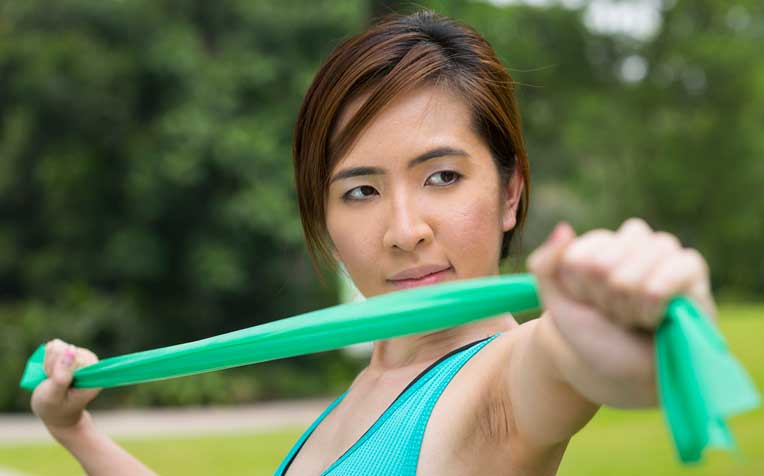HealthXchange will NEVER ask you to transfer money over a call. If in doubt, call the 24/7 ScamShield helpline at 1799, or visit the ScamShield website at www.scamshield.gov.sg.

Exercise can help to strengthen muscles and improve joint flexibility.
There is presently no medication that can cure osteoarthritis or regrow the cartilage in osteoarthritic joints.
Types of medication to treat osteoarthritis
The most commonly prescribed medication is painkillers. The type of painkiller prescribed depends on the severity of the pain. For early disease with mild and occasional pain, simple painkillers such as paracetamol (Panadol®) can be effective, although more severe pain may require the use of non-steroidal anti-inflammatory drugs (NSAIDs) for relief. Analgesic (painkillers) creams and adhesive patches can also be used.
Glucosamine, with or without chondroitin, has also become a popular drug treatment in recent years. It can be purchased without a doctor’s prescription. However, it is ineffective in many patients, especially those with severe osteoarthritis. "The duration of its symptomatic relief also tends to be temporary. There is no evidence that glucosamine or chondroitin is able to result in cartilage repair," say doctors from the Department of Rheumatology & Immunology at Singapore General Hospital (SGH), a member of the SingHealth group.
Injections for osteoarthritis
For the treatment of osteoarthritis, your doctor may sometimes recommend a steroid injection into or around the joint if you have not responded to the conservative treatment indicated above. While pain relief can be impressive, it is usually only temporary, and your doctor will limit the number of steroid injections that you can receive as repetitive injections can weaken tendons, further worsening the already damaged cartilage.
Surgery to treat osteoarthritis
Surgery is usually only offered for severe disease which has not responded to the conservative treatment methods. Both the type of surgery and the decision for surgery are made following careful discussions between you and your doctor.
For many joints in the hands, arthodesis or fusion of the joint is the method of choice. In joint fusion, the arthritic surface is removed and bones on either side of the joint are fused to eliminate movement from the problem joint.
There may be some loss of movement but the pain ablation and stability may functionally improve the joint that is severely affected by the degenerative joint disease.
Ref: S13
Contributed by
Related Articles
Public Events
Get the Health Buddy App
© 2025 SingHealth Group. All Rights Reserved.


















 Get it on Google Play
Get it on Google Play